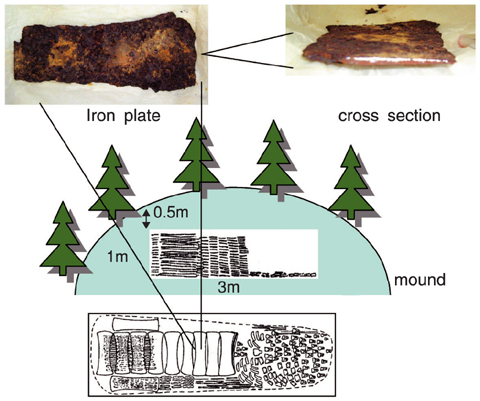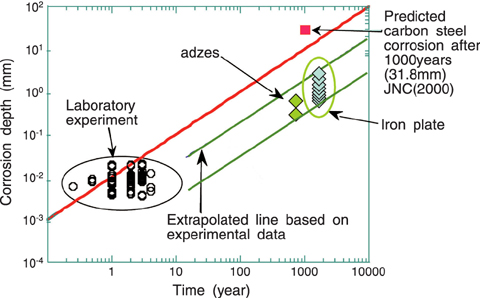
Fig.2-5 Condition of iron plate buried for 1500 years and its excavation site

Fig.2-6 Conservatism of prediction of corrosion after 1000 years based on data of excavated artifacts
Carbon steel material being considered for use as an engineered barrier system (overpack) is expected to keep its strength for more than 1000 years. We estimated maximum corrosion depth of the overpack as 31.8 mm for 1000 years in the case of vertical setting in rock. For the purpose to obtain some data as second evidence for the long stability estimation, we investigated corrosion phenomena for iron material of archaeological sample which buried for more 1000 years and their corroded environmental condition.
Two adzes buried in clay for 750 years were dug out from the Izumo-Oyashiro-keidai ruins (Taisha-machi, Shimane). One of candidate metal material of the overpack is carbon steel which will be surrounded by clay in a proposed concept of Japanese high-level waste disposal. The environment of these excavated samples is similar to the proposed Japanese disposal environment.
Yamato 6th tumulus is famous as a ruin from which 872 iron plate artifacts were excavated. We examined the corrosion depth of these samples using X-ray CT. Although they were buried for 1500 years, they had metallic brightness in their cross sections (Fig.2-5).
Corrosion data for these artifacts such as thickness and density of the rust were analyzed non-destructively using a high-power X-ray computer tomography system, because of their historical importance. The density distribution was obtained from the X-ray CT image, and thickness of the rust was determined by the density difference between the base iron material (ρ = 8.0) and their rust (magnetite:ρ = 4.0). In Fig.2-6, the corrosion data of the artifacts is shown together with data from laboratory experiments with corrosion periods of several years. The red square symbol ■ is carbon steel corrosion depth, 31.8 mm, after 1000 years predicted by extrapolation of the laboratory data (red line). Two green lines extrapolations based on experimental corrosion data under slightly oxidizing or reducing conditions. The upper line corresponds to a 0.001 mm/y corrosion rate. It is clear from these results that the predicted corrosion data is conservative.
We will continue to obtain corrosion data of iron artifacts as secondary evidence for the long term stability estimation of carbon steel and work to develop a high reliability estimation method.